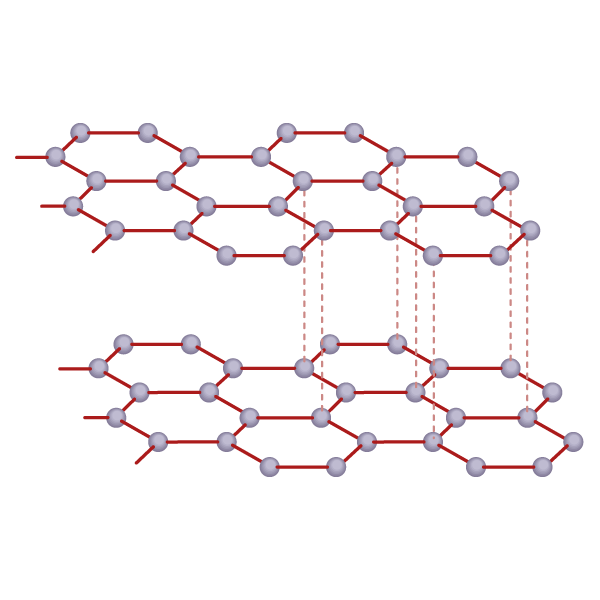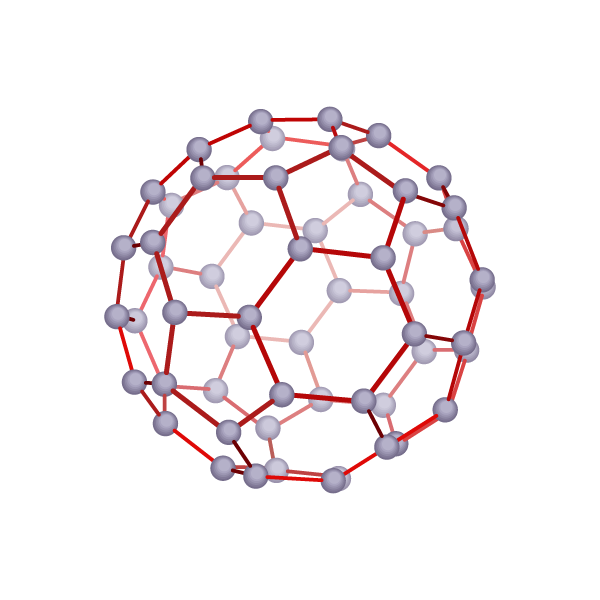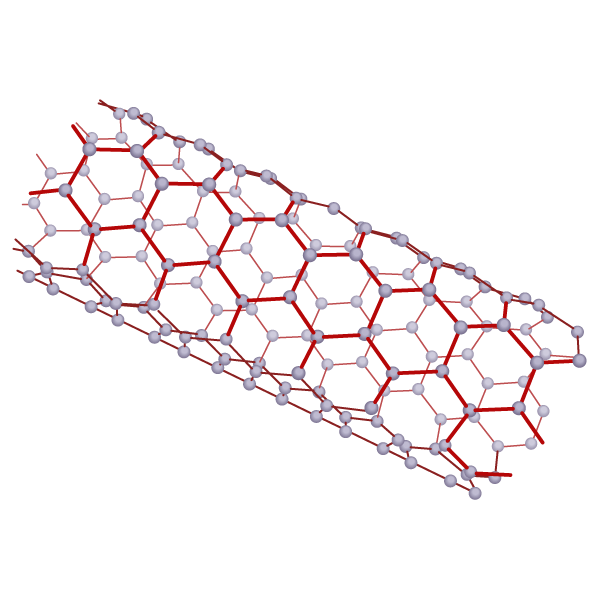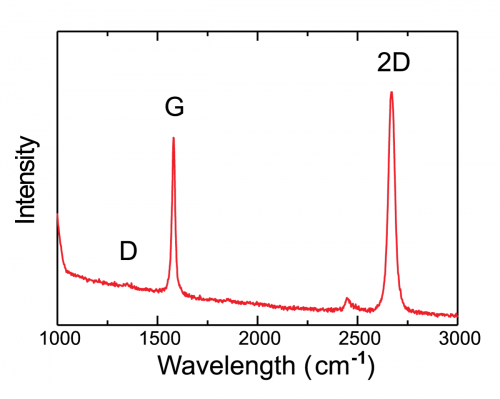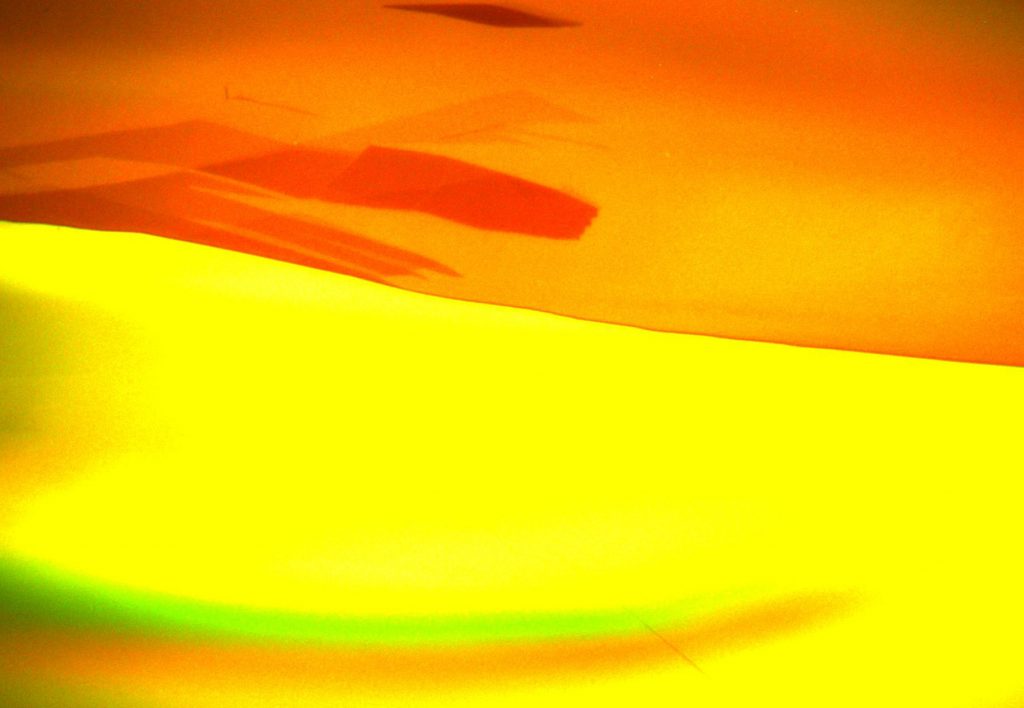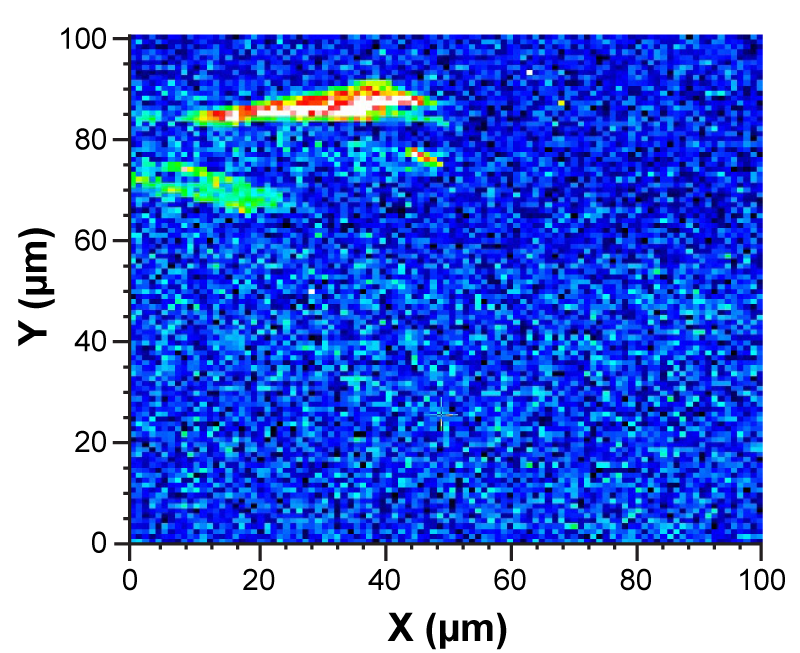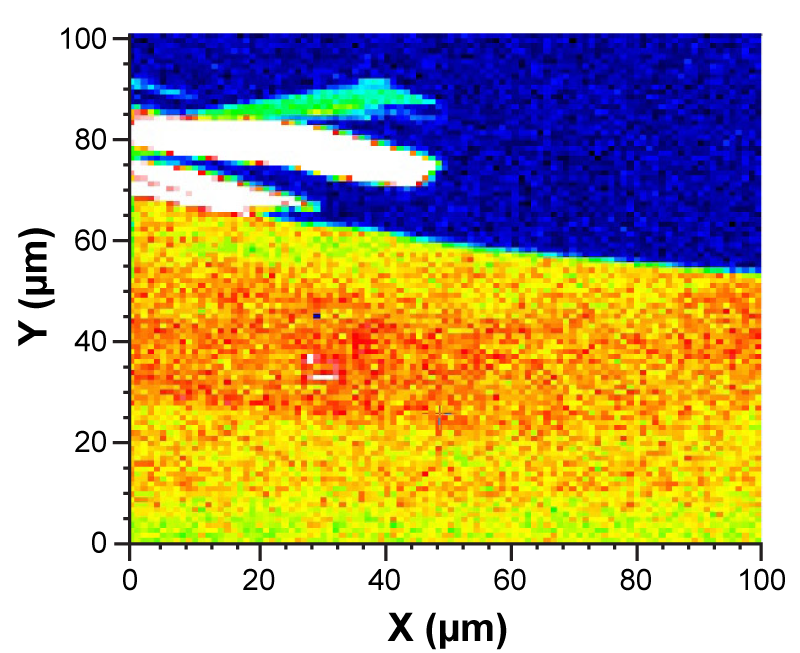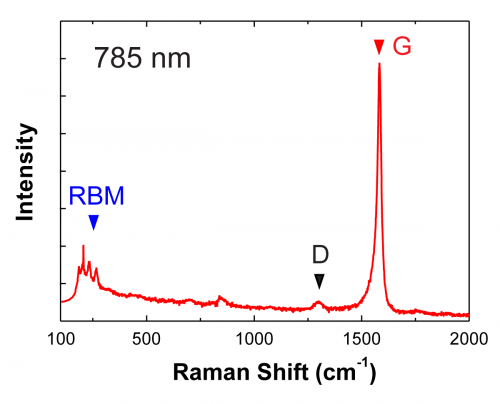Raman Spectroscopy for Investigation of Carbon Materials
Raman spectroscopy is based on inelastic scattering of monochromatic light by molecules of the investigated substance. Lasers with the following operating wavelengths of 532, 785, and 1064 nm are mainly used as a light source. The Raman spectrum contains a number of narrow lines, each of which corresponds to specific vibrational resonances of the carbon material. Thus, any set of molecular sp bonds has its own set of characteristic Raman scattering lines, the so-called spectral fingerprint. It can be used to carry out a high-precision analysis of the investigated carbon film, fiber, or nanomaterial.
Raman scattering of light on graphene
Inelastic light scattering in graphene depends on the phonon spectrum of the material and is expressed in a series of well-pronounced peaks associated with C-C bonds: G peak, 2D peak, and defect D-peak. A typical Raman spectrum from graphene, obtained using a RamanLife Raman microscope, is shown in the figure below. The graphene microstructure was fabricated by mechanical exfoliation of graphite on a silicon substrate with an oxide. To ensure good visibility of graphene we used 285 nm oxide thickness. The Raman spectrum of graphene can be used to determine the number of carbon layers, the quality of the material, and the concentration of charge carriers in graphene.
Raman spectroscopy of carbon nanotubes
Carbon nanotubes (CNT) represent a relatively new class of nanomaterials that are attracting more and more interest from the point of view of various applications. The structure of a single-walled carbon nanotube (SWNT) can be simplified as a carbon monolayer rolled into a cylinder. In this case, such parameters as the orientation of the axes of the original carbon structure relative to the direction of the axis of the tube and the diameter of the resulting tube determine a number of its important physical properties. For example, the tube can be an insulator, a semiconductor, or exhibit metallic properties. Raman spectrometers from RamanLife are a unique instrument for studying the carbon nanotubes' physical properties by the method of Raman scattering in various optical configurations. The advantages of Raman spectroscopy are especially compelling for single-walled nanotubes. Among the advantages, one should note the unambiguous correlation between the spectral characteristics and physical properties of nanotubes.
An important advantage of RamanLife Raman spectrometers is the wide spectral range of 100-2700 cm-1. Thanks to this range, it is possible to resolve even the radial breathing modes (RBM). The possibility of installing in the device lasers with different wavelengths (532, 785 or 1064 nm) allows you to get rid of the substrate's parasitic luminescent signal.

